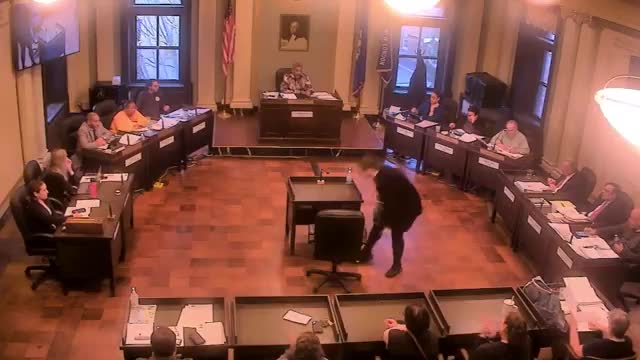New London City Council approves FY 25-26 budget of over $58M amidst financial challenges
April 24, 2025 | New London, New London County, Connecticut
This article was created by AI summarizing key points discussed. AI makes mistakes, so for full details and context, please refer to the video of the full meeting. Please report any errors so we can fix them. Report an error »

The New London City Council convened on April 23, 2025, to discuss the proposed budget for fiscal year 2025-2026, which has significant implications for the community. The council approved the first reading of the budget, which totals approximately $58.2 million for the general fund, alongside allocations for various other funds, including community development and public safety.
A key focus of the meeting was the city's financial strategy in light of a projected $3.5 million deficit. Mayor Dominguez outlined measures taken to balance the budget without raising taxes or depleting the city's fund balance. These measures include a proposed reduction in workforce costs by $1.5 million through early retirement options for city employees and the diversion of $2 million from last year's surplus into a mill rate stabilization fund. This approach aims to maintain essential municipal services while addressing financial challenges.
Council members expressed concerns about the implications of tapping into the fund balance, which is crucial for maintaining the city's bond rating. Director McBride emphasized that a healthy fund balance is vital for securing favorable borrowing rates, which ultimately affects taxpayers. The current fund balance stands at approximately $19.6 million, which is slightly below the recommended levels for optimal financial health.
The council also discussed the impact of state funding cuts, particularly the reduction in payments in lieu of taxes (PILOT) that support the city’s budget. Mayor Dominguez highlighted the irony of local institutions, such as Conn College, benefiting from tax-exempt status while the city struggles to maintain financial stability.
In conclusion, the council's discussions reflect a commitment to fiscal responsibility while navigating the complexities of budget management in a challenging economic environment. The next steps will involve further deliberations on the budget and continued advocacy for equitable state funding to support local education and services. The council's decisions will directly impact residents, shaping the city's financial landscape for the coming years.
A key focus of the meeting was the city's financial strategy in light of a projected $3.5 million deficit. Mayor Dominguez outlined measures taken to balance the budget without raising taxes or depleting the city's fund balance. These measures include a proposed reduction in workforce costs by $1.5 million through early retirement options for city employees and the diversion of $2 million from last year's surplus into a mill rate stabilization fund. This approach aims to maintain essential municipal services while addressing financial challenges.
Council members expressed concerns about the implications of tapping into the fund balance, which is crucial for maintaining the city's bond rating. Director McBride emphasized that a healthy fund balance is vital for securing favorable borrowing rates, which ultimately affects taxpayers. The current fund balance stands at approximately $19.6 million, which is slightly below the recommended levels for optimal financial health.
The council also discussed the impact of state funding cuts, particularly the reduction in payments in lieu of taxes (PILOT) that support the city’s budget. Mayor Dominguez highlighted the irony of local institutions, such as Conn College, benefiting from tax-exempt status while the city struggles to maintain financial stability.
In conclusion, the council's discussions reflect a commitment to fiscal responsibility while navigating the complexities of budget management in a challenging economic environment. The next steps will involve further deliberations on the budget and continued advocacy for equitable state funding to support local education and services. The council's decisions will directly impact residents, shaping the city's financial landscape for the coming years.
View full meeting
This article is based on a recent meeting—watch the full video and explore the complete transcript for deeper insights into the discussion.
View full meeting
